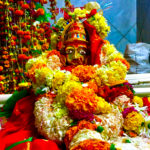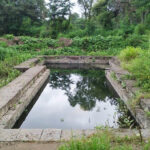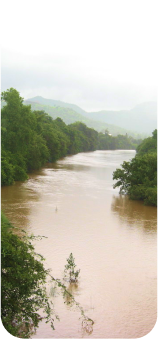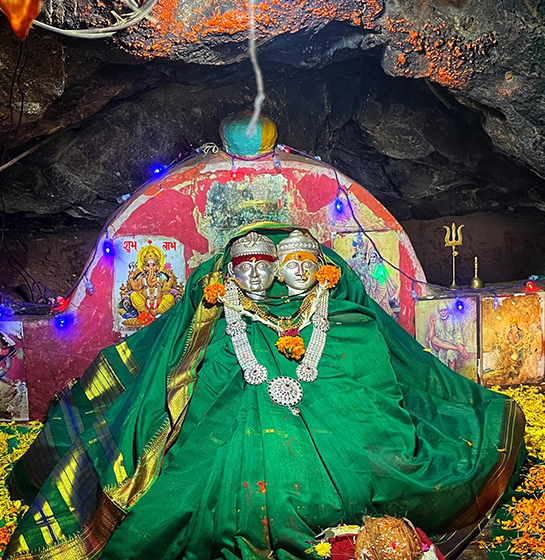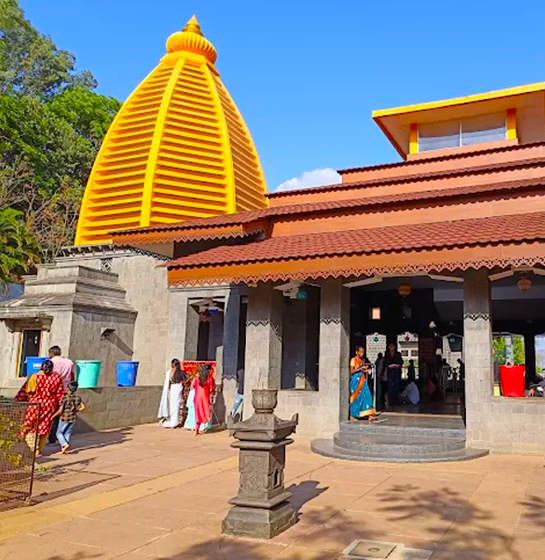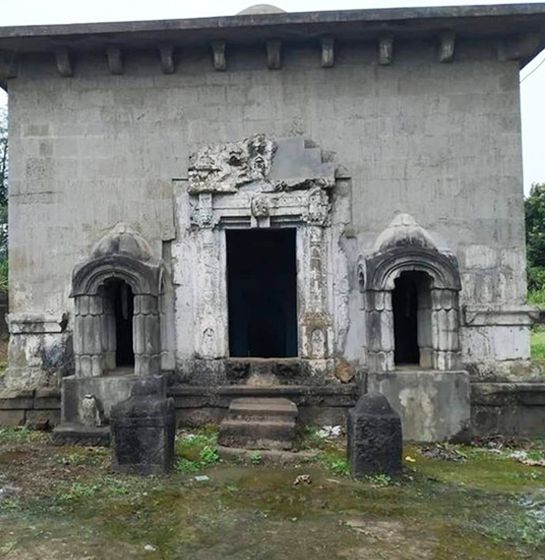Jambhuldev Shiva Temple
Jambuldev Shiva Temple – Khubawali, Mulshi
Jambuldev Mahadev Temple is situated on the hills between the villages of Khubawali and Nanegaon in Mulshi taluka. You can reach the temple by car via Mahindra College, or there’s a footpath leading to it from Khubawali and Nanegaon. The temple is nestled in dense woods, and the structure has largely collapsed, with only the sanctum sanctorum remaining. Scattered around the temple are virgals (hero stones) from various historical periods, now buried in the soil. Large stone slabs, intricately carved, were used in constructing the temple.
It is estimated that the temple is around 600 to 700 years old, likely built during or shortly after the Yadava period. The construction technique used is called dry masonry, where stones are interlocked without the use of mortar or other binding materials. Throughout the temple complex, you can find remnants of the temple’s roof and broken stone slabs. There is also a damaged statue of Nandi outside, along with a carved depiction of the Sheshnag (serpent deity). Inside the sanctum, a broken lingam of Lord Shiva can be found, alongside a stone lamp. Unfortunately, the condition of the sanctum stones is deteriorating, and they are at risk of collapsing soon.
During the Yadava period, many temples were established, and the Jambuldev temple is believed to be one of them. Why is it named Jambuldev? It’s because the area surrounding the temple is filled with large jamun (Indian blackberry) trees. The temple is a place of faith for the local villagers, and during Mahashivaratri, devotees visit in large numbers. According to local villagers, the temple was built overnight by the Pandavas during their exile. The temple is now in need of restoration. Make sure to visit this off-the-beaten-path temple of Jambuldev Mahadev.
Thank you,
Akash Marne
Team Mulshi


Jambhuldev Shiva Temple Details
Pune to Navdurga – Jambuldev Shiva Temple
Duration: 1.5 to 2 hours

What to Expect
A mix of dense forest and open plateau.
– Various fruit-bearing trees and lush vegetation.
– Historical and cultural sites along the trail

Best Time to Visit
– Winter (October to February): Ideal for trekking due to pleasant weather.
– Monsoon (June to September): Offers lush greenery and waterfalls but requires extra caution due to wet conditions.
– Summer (March to May): Can be quite hot; start hikes early to avoid the heat.

How to reach there
Mulshi is accessible by road from Pune and Mumbai. Public transportation options and private vehicles are available for reaching the Jambhuldev Shiva Temple.

Tips for Hikers
Carry at least 3 liters of water and some snacks.
– Consider hiring a local guide for a more informative experience.
– Start early to avoid the midday heat.
Experience the various trekking routes of Mulshi and immerse yourself in the natural beauty and cultural richness of this captivating region. Whether you seek adventure, tranquility, or historical exploration, Mulshi offers you a unique trekking experience.
admin
Published: October 10, 2024
